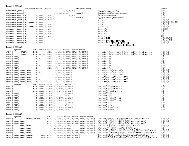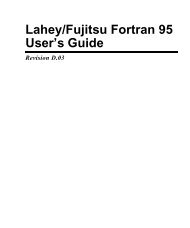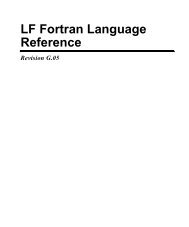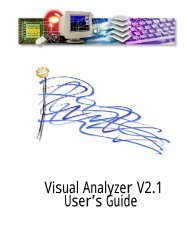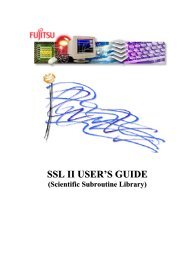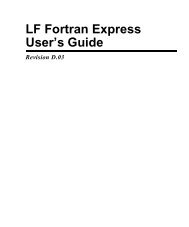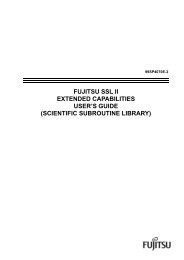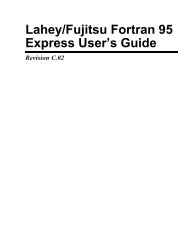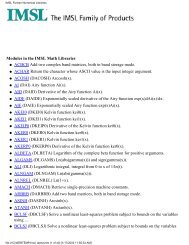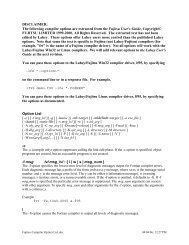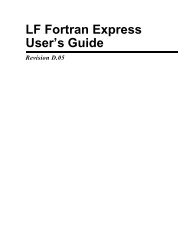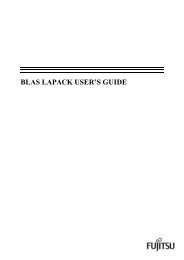LF95 Linux User's Guide - Lahey Computer Systems
LF95 Linux User's Guide - Lahey Computer Systems
LF95 Linux User's Guide - Lahey Computer Systems
You also want an ePaper? Increase the reach of your titles
YUMPU automatically turns print PDFs into web optimized ePapers that Google loves.
• At the loop positionOptimization Control LineDISJOINT promotes loop slicing for the DO loop (and all nested loops) corresponding to theOCL.• At the total positionDISJOINT promotes loop slicing for all loops in the program unit. Consider the followingcode:do j = 1, 1000do i = 1, 1000a(i,l(j)) = a(i,l(j)) + b(i,j)end doend doBecause the subscript expression of array A is another array element L(J), the system cannotdetermine whether there is a problem if array A is sliced. Therefore, this system does notslice the outer DO loop.If the programmer knows that there is no problem if array A is sliced, the outer DO loop willbe sliced if DISJOINT is used as shown in the example below.The letter P shown on the left side of the source program marks the parallelized statements.!ocl disjoint(a)p do j = 1, 1000p do i = 1, 1000pa(i,l(j)) = a(i,l(j)) + b(i,j)p end dop end doNote:If an array which cannot be sliced is marked DISJOINT by mistake, LF64 may perform anincorrect loop slicing and the program results may be incorrect.TEMPThe TEMP specifier is used to indicate to the system that the variables listed are used temporarilyin the DO loop.As a result, the execution performance of the parallelized DO loop can be improved.Syntax:!OCL TEMP [ (s [,s]...) ]Here, "s" is a variable name used temporarily in a DO loop. A wild card specification isusable in "s". If the variable name is omitted, TEMP becomes effective for all scalar variableswithin the range of the DO loop. See “Wild Card Specification” on page 102 for thewild-card syntax.The TEMP specifier can be placed at the loop position or the total position.The effect of TEMP depends on its position.<strong>Lahey</strong>/Fujitsu <strong>Linux</strong>64 Fortran User’s <strong>Guide</strong> 99



